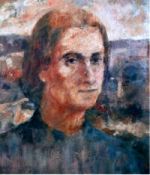Catholic World News News Feature
Pew survey shows America's vast Catholic exodus March 02, 2008
One out of every ten adult Americans is a lapsed Catholic. From the Catholic perspective that is the most striking statistic among the many furnished in a "Religious Landscape Survey" by the Pew Forum.
Catholics still constitute the single largest religious denomination in the US, accounting for 23.9% of the adult population. (Evangelical churches, taken as a group, are home to 26.3% of the American people; but they are divided among the different Protestant denominations.) Baptists run a distant second, with 12.7%. If they qualified as a separate denomination, the Americans who have deserted the Catholic Church of their childhood would constitute the third-largest religious group in the country, with 10.1% of the population.
The Pew study, based on exhaustive polling, found that Americans switch their religious affiliations frequently. About 44% of adult Americans now belong to a church different from the one in which they were raised. The Religious Landscape Survey shows that mainline Protestant churches have suffered the most severe losses, and Protestants are now barely clinging to their majority status, with 51% of the population. The largest gains show up, ominously, in the "unaffiliated" category, which now accounts for 16% of America's increasingly secularized people.
The Catholic proportion of the US population has remained roughly constant over the past 30 years-- but only because of the influx of Hispanic immigrants. Today 29% of American Catholics are of Hispanic origin. Without them the Catholic representation in America would be declining sharply.
In the Pew surveys, 31.4% of the respondents said that they had been raised as Catholics. Another 2.6% had entered the Church as converts. But again, 10.1% had left the Catholic faith. Thus for every new convert, the Church is losing roughly four cradle Catholics. For everyone who comes in the doors of the Catholic Church, four people leave. No wonder the churches are empty!
The most important story about Catholicism in American over the course of the past generation has not been the sex-abuse scandal, nor the changes that followed Vatican II. The most important story is the vast exodus of Catholics leaving the faith. This is the story that I try to illustrate-- using the Boston experience as a microcosm-- in my new book The Faithful Departed: The Collapse of Boston's Catholic Culture. While Church leaders speak confidently about a "vibrant" Catholic community, the congregations are aging and thinning, the parishes are closing, the Catholic influence on our society is evaporating.
Am I painting an unduly grim picture? I doubt it. The Pew Forum researchers note that in their survey, when respondents identified themselves as a Catholics, they accepted that identification "regardless of their specific beliefs and whether or not they attend Mass regularly." Since we already know that only a minority of self-described Catholics are regular church-goers, the Pew figures undoubtedly overstate the size of the Catholic population, and understate the severity of the Catholic exodus.
Statistics can be manipulated, but in the short time since the Pew study appeared, I have seen no serious criticism of its methodology. On the contrary, the Religious Landscape Survey appears to be a thoroughly professional study, conducted on an enormous sample group, using the best accepted polling practices.
The numbers do not lie. American Catholicism is facing a crisis. The sooner we recognize that fact, the sooner we can plot our response.






